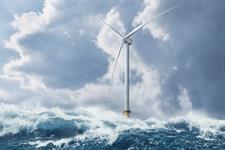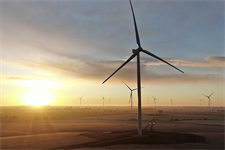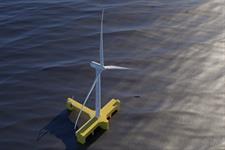Longer offshore wind blade test bench takes shape
Energy Disrupter
Germany’s Fraunhofer IWES has started construction of a third rotor blade test bench at its Bremerhaven site. It will be used to test state-of-the-art prototypes with a length of 115 metres or more.
The €19 million project will include a modular test block and the development of new methods for investigating subsegments. The site’s location near the German coast means long blades transported by sea only have to travel a short distance to the testing hall.
Fraunhofer commissioned its 90-metre blade testing hall ten years ago. However, the recent increase in blade length has fuelled demand for the new bench, which is due to be commissioned in summer 2022.
The State of Bremen and the Federal Ministry of Education and Research (BMBF) are funding the hall construction with around €4 million. Test bench setup funding of €14.8 million is being provided by Germany’s Federal Ministry for Economic Affairs and Energy (BMWi).
“The project will enable us to leverage further potential for optimisation in the future, which will benefit the energy transition in Germany,” said Wolfgang Langen, head of project funding and international affairs at the BMWi’s energy research unit.
Construction of the test bench will start with the anchoring of 175 piles in the sandy soil of the building site, to transfer the huge loads that occur during testing. A gantry crane for lifting the blades can carry a load of 120 tonnes. Completion of the test hall is scheduled for the end of 2021, with the test block (below) and measurement technology being added in 2022.
 The test block for mounting the blade can be expanded and converted – if increases in length make amendments necessary (pic credit: Fraunhofer IWES/gobasil)
The test block for mounting the blade can be expanded and converted – if increases in length make amendments necessary (pic credit: Fraunhofer IWES/gobasil)
Fraunhofer rotor blade experts will also focus on biaxial testing of complete blades, using sensors to measure the blade’s structural behaviour under load when it is set in motion along its transverse and longitudinal axes. This allows simulation of a realistic load distribution.
Siemens Gamesa recently launched its SG 14-222 DD turbine with a capacity of up to 15MW and 108m-long blades, while Danish firm Vestas’ V236-15.0MW will have 115.5m-long blades and US giant GE’s Haliade-X turbines have 107-metre long blades.
The German-Spanish manufacturer’s head of validation means management, Vicente García, said: “Blade testing facilities for ultra-large offshore blades are vital to meet internal validation objectives and certification standards, with the final goal of optimising the design and performance of our wind turbine blades while ensuring its reliability.”
Testing subsegments of the rotor blade also presents advantages by reducing the testing time, in some cases by several months. This ensures that the experimental testing of very long rotor blades remains economically viable for manufacturers.
















